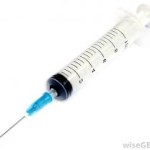diabetes
now browsing by tag
How to Cure Diabetes
In an era where every symptom becomes a deficiency of the latest drug, it makes the word “cure” sound as though it borders on quackery. But nothing could be further from the truth. For example, the leading diabetes prescription medications have quadrupled the heart attack rate, increased bladder cancers and depleted vitamin B12 which leads to exhaustion, impotence, Alzheimer’s, and much more. In fact the leading diabetes medication according to the Journal of the American Medical Association 2010 doubles the heart attack rate. Furthermore, lowering the main test that doctors use to monitor diabetes (the hemoglobin A1C) with a diabetes drug increases death 22%. As well, diabetes drugs set folks up for blindness from retinopathy, renal failure in 37% which requires dialysis which then leads to heavy metal toxicity, a 33-70 % increase in cancer, 50% get memory loss, and much more. Even a study in the 2008 New England Journal of Medicine showed that you can give all the best medications to diabetics for 5 years making their blood tests look normal, but it does not change their rate of dying one iota. One in four Americans over 60 has diabetes and three times that number are pre-diabetic with hypertension, elevated cholesterol or triglycerides, obesity, NASH (not alcoholic steatohepatitis or fatty liver disease), and/or Metabolic Syndrome X (insulin resistance). Diabetes is clearly our best example of accelerated aging. And as far as the multiple curable causes of diabetes go, the #1 cause permeates 80% of our diet. Yet the FDA limit on this #1 cause is 500 times higher than the dose that researchers use to create diabetes. The good news is sometimes as little as pennies of non-prescription nutrients can literally cure diabetic nephropathy (kidney disease), prevent amputations, reverse diabetic retinopathy, as well as reverse diabetes to the point of needing no medications. Come and learn how to empower yourself (contains well over 1000 references).
More books by Dr. Rogers. (I had the pleasure of meeting her and she truly is an amazing person and great healer.)
To order the book CLICK HERE.
Here is more information on Kicking Diabetes to The Curb!
Click Here!
Thanks for reading! To your health!!!!
Terry Ryan
If you want to be included on our newsletter list, sign up below.
Leaky Gut & Diabetes by Terry Ryan

Nearly 26 million Americans have either Type I or Type II diabetes at a cost of more the $245 billion  annually. The American Diabetes Association estimates that by 2050, as many as 1 in 3 American adults will have diabetes. While the majority of diabetes research, publicity, and health care dollars focus on Type 2 diabetes and obesity, we need to pay attention to type 1 diabetes. The incidence of Type 1 diabetes (T1D) has increased significantly worldwide just in the last few decades, and it is important we focus our energy on it as well.
annually. The American Diabetes Association estimates that by 2050, as many as 1 in 3 American adults will have diabetes. While the majority of diabetes research, publicity, and health care dollars focus on Type 2 diabetes and obesity, we need to pay attention to type 1 diabetes. The incidence of Type 1 diabetes (T1D) has increased significantly worldwide just in the last few decades, and it is important we focus our energy on it as well.
Type I diabetes can occur in both adults and children and is due to destruction of the cells in the pancreas called beta cells. Diabetes can start suddenly and symptoms may include:
- Extreme thirst
- Increased urination
- Increased appetite
- Sudden weight loss
- Fatigue or lethargy
- Sudden vision changes
- Fruity odor to the breath
It is caused by the immune system attacking the pancreas, i.e. it is an autoimmune disorder. The pancreas can no longer make insulin because the beta cells have been destroyed and insulin must come from an outside source. It is a constant daily challenge for these individuals to manage their blood sugar.
Medical history shows that childhood diabetes, or Type 1 diabetes, was quite rare in several countries across the world and showed no change in incidence from 1925-1955. The 1892 edition of Osler’s Principles and Practice of Medicine mentions that only 10 patients out 35,000 treated at Johns Hopkins had diabetes (1 and 2). Massachusetts General Hospital recorded admitting and treating 172 patients with diabetes from 1824-1898, of which there were only 18 patients under the age of 20. However, an increase in the prevalence of T1D has been documented since the mid 1900’s and has been steadily increasing since then.
Compare historical findings to the latest statistics. There are three million Americans with Type 1 diabetes  with more than 15,000 children and 15,000 adults diagnosed each year. There has been a 23% increase in prevalence of Type 1 diabetes in children and teenagers between 2001 and 2009. Many argue these statistics, reasoning that it is simply better diagnostic techniques, recognition, and statistics. The topic continues under debate, but the numbers are clear. The illness is impacting more every year.
with more than 15,000 children and 15,000 adults diagnosed each year. There has been a 23% increase in prevalence of Type 1 diabetes in children and teenagers between 2001 and 2009. Many argue these statistics, reasoning that it is simply better diagnostic techniques, recognition, and statistics. The topic continues under debate, but the numbers are clear. The illness is impacting more every year.
Leaky Gut Syndrome and Type I Diabetes
For decades, medical research has been trying to understand the causes of Type I diabetes. They face many of the same challenges in understanding why the autoimmune disorder occurs as other autoimmune diseases. There have been many theories over the years and research continues to delve into the causes of T1D.
There is strong evidence coming to light that environmental products and subsequent development of digestive issues are triggering autoimmune destruction of pancreatic beta cells leading to Type I diabetes in both children and adults.
Several recent studies have now identified that altered or increased intestinal permeability (Leaky Gut Syndrome) is actually responsible for the onset of Type 1 diabetes. This altered mechanism occurs before the onset of complications, i.e. full blown destruction of the pancreatic beta cells. Animal studies showed that the altered intestinal permeability preceded the onset of diabetes by at least one month. This increase in gut permeability does not occur as the cause in Type II diabetes, but specifically to Type 1 diabetes. Human studies show that this breakdown and change in tight junctions and zonulin* is present in at least 50 % of T1D patients.
In addition to the presence of increased gut permeability prior to T1 D development, the medical journal Diabetes reported that at least half of T1D patients had an abnormal T-cell immune response to dietary wheat proteins and triggered different gene expression than Celiac Disease patients. Meaning when T1D patients were tested for the traditional Celiac Disease lab marker, tissue transglutaminase IgG and IgA, their markers were negative and many times there were no digestive symptoms like with Celiac Disease. However, when tested for other wheat peptides, their markers reacted with a positive finding. It was a completely different gene that was being triggered by wheat/gluten not measured by the standard medical marker and provoked a T-cell immune response against the pancreas. Wheat has been proven in animal studies as a trigger for T1D, but now researchers are seeing this “silent” association in human studies. In fact, the association of T1D with other autoimmune disorders, commonly Celiac Disease and Hashimotos’sthyroiditis, has been known for quite sometime. The scope has widened beyond traditional Celiac Disease markers and T1D.
Knowing that increased gut permeability precedes T1D onset and that wheat/gluten autoimmunity is present at least half the time in T1D development is powerful information. This is a huge breakthrough in understanding T1D and autoimmunity. Testing wheat/gluten autoimmunity and reactivity, increased zonulin levels, and intestinal permeability are now easily done by blood tests leaving the guess work out of the picture.
Gut Flora
Researchers are diligently studying the gut microbiome imbalances or alterations in gut flora and have found that it is clearly associated with increased gut permeability. This means that a germ, i.e. yeast or bacteria that should not be in the digestive tract, can clearly initiate Leaky Gut Syndrome. The antibiotic that was taken by a child for an upper respiratory infection, acne, or the ear infection, can trigger this gut microbiome imbalance. Combine that with the athlete who is trying to make varsity team in high school or college. Then throw in disrupted gut clocks and altered sleep-wake schedules that teenagers often experience while consuming the standard American Diet of white flour (gluten) and white sugar and lots of fast food stops after school. How about the weekend warrior athlete with the same factors? It can be the perfect storm for the development of Type 1 diabetes. <Screammmmmm>
Researchers are studying other autoimmune disorders and there is mounting evidence that several diseases follow this same change in tight junctions and zonulin function leading to Leaky Gut Syndrome and autoimmune inflammation. It also includes other disorders such as asthma, rheumatoid arthritis, lupus, inflammatory bowel disease, several types of cancers including brain and pancreatic cancer, chronic inflammation, and schizophrenia. This is similar to Celiac Disease, thyroid problems, and candida overgrowth.
Help!
There are several solutions that can be used to help support the body in the case of Type 1 diabetes. It is imperative to be tested for “wheat/gluten proteome reactivity and autoimmunity” and remove these food intolerances if present. It is absolutely vital to also include organic, fermented foods like fermented veggies or probiotics that help support beneficial gut bacteria. It is just as imperative to work on reducing the risk and consequences of Leaky Gut Syndrome. There are several compounds that help reduce this inflammatory response and reduce the risk for T1D. These include L-glutamine, probiotics, vitamin D, and Omega 3 oils.
There also is the whole aspect of helping blood sugar work better and reducing the consequences of elevated blood sugar and AGEs or Advanced Glycation End Units. No matter what age you are, if you have T1D, you have to be proactive lifelong about reducing AGEs responses. Several nutrients can help support this process:
These has been shown to protect against AGEs, but it also helps to protect T- cells that may be part of the issue for Type 1 diabetes. Because poorly controlled blood sugar damages capillaries, kidneys, eyes, nerves in anyone with Type 1 diabetes and Type 2 diabetes, as well as those who have borderline blood sugar levels, it is vital to be proactive about these concerns. A young child with T1D has a lifetime ahead of them. Let’s help protect these children and adults from further damage, or if possible, reduce the risk for the disease from occurring. Be proactive!
*Zonulin is a protein that modulates the permeability of tight junctions between cells of the wall of the digestive tract.
Special thanks to Linda J Dobberstein, DC, DACBN, DCBCN for the above information.
Terry Ryan is a health blogger and lives in Sarasota, FL with her husband, Kenan.
What the Heck is Diabetes?

 What the heck is diabetes? Yes, I’m sure you have heard of it…and that it’s increasing. My endocrinologist’s office is filled with patients with Type 1 and 2 diabetes making it difficult for us thyroid sufferer to make an appointment. Okay, that’s only slightly true but according to JAMA over 44 million now considered obese
What the heck is diabetes? Yes, I’m sure you have heard of it…and that it’s increasing. My endocrinologist’s office is filled with patients with Type 1 and 2 diabetes making it difficult for us thyroid sufferer to make an appointment. Okay, that’s only slightly true but according to JAMA over 44 million now considered obese
Currently, more than 44 million Americans are considered obese by body mass index (BMI), reflecting an increase of 74 percent since 1991. During the same time frame, diabetes increased by 61 percent, reflecting the strong correlation between obesity and development of diabetes. Today an estimated 17 million people have diabetes in the United States. And this was in the journal Lancet: An international study has revealed some shocking statistics. In less than 30 years, between 1980 and 2008, the number of people with type 2 diabetes more than doubled around the world, rising from 153 million to 347 million.
Yikes, right! But let me put what diabetes is in simple words.
Type 2 diabetes accounts for 90-95% of all cases of diabetes. Type 2 diabetes is caused by eating too much sugar. Remember, sugar has 56 names.(Click here for the 56 Names of Sugar) Here’s how it works. When you eat a meal, the carbs in your food are broken down into glucose. The glucose enters your bloodstream where it is carried throughout your body to give…energy! Your pancreas in turn releases the hormone insulin to help your cells turn glucose into energy. What happens when there is too much sugar over and over again? Your body becomes insulin resistant. So, the pancreas sends more and more insulin out (poor pancreas) into the bloodstream so glucose can convert to energy but keep going along like this; forcing more insulin into your bloodstream, and your pancreas won’t be able to keep up. What happens instead is that the glucose becomes trapped into your bloodstream, and the cells of your muscles and organs are starved for energy. Eventually, this causes organ and nerve damage.which eventually will lead to heart disease, eye sight damage, limbs being amputated, strokes, etc.
That’s why your grandparents used to call it SUGAR. Because you give a urine sample and if you are experiencing diabetes an over abundance of glucose will present in your sample. Now, it is know as simply diabetes – type 2.
Type 1 diabetes is usually diagnosed in children and young adults, and was previously known as juvenile diabetes. Only 5% of people with diabetes have this form of the disease.
In type 1 diabetes, the body does not produce insulin. Insulin is a hormone that is needed to convert sugar, starches and other food into energy needed for daily life. With the help of insulin therapy and other treatments, even young children can learn to manage their condition and live long, healthy lives.
– See more at: http://www.diabetes.org/diabetes-basics/type-1/#sthash.meThJ71C.dpuf
Are You at Risk for Type 2 Diabetes?
- A waist that is 35 or more inches in diameter of you’re a woman or 40″ if a man.
- A Blood triglyceride of 150 or greater.
- Fasting blood sugar greater than 100mg.
Symptoms you may have type 2 diabetes:
- Common symptoms of diabetes: Urinating often Feeling very thirsty Feeling very hungry – even though you are eating
- Extreme fatigue
- Blurry vision
- Cuts/bruises that are slow to heal
- Weight loss – even though you are eating more (type 1)
- Tingling, pain, or numbness in the hands/feet (type 2) –
- See more at: http://www.diabetes.org/diabetes-basics/symptoms/#sthash.souFT766.dpuf
What you can do to prevent developing type 2 diabetes.
Eat a well balanced diet that is high in vegetables, low in simple carbohydrates, zero in refined sugar except on your birthday and maybe Christmas…if you must, and, this is a big one…cut out the alcohol.
I recently read a magazine about diabetes and they had some recipes that included chocolate cake. Come on! Chocolate cake? Yes, it had stuff like sugar and white flour. No, not a good thing to eat if you have or have not diabetes. This recipe for 1 Minute Chocolate Cake is the correct recipe for preventing diabetes:
1-Minute Cake With Almond Flour
1/4 cup Truvia Baking Blend
1/2 cup almond flour
3 tbsp unsweetened cocoa powder
1/8 tsp baking powder
1/2 tsp baking soda
1/4 tsp salt
2 tbsp coconut oil
1 egg
2 tbsp half & half
Directions
Mix all ingredients together in a bowl until the mixture is even and smooth (no lumps).
Pour 1/4 of the mixture into a mug and microwave for 1 minutes.
Refrigerate remaining batter for later!
I like to add unsweetened whipped cream on top. No sugar carbs in this recipe!
If you suspect you have symptoms of diabetes it is imperative to seek a doctor’s advice as soon as possible and be tested. I have my blood tested every year.There is medicines that can control diabetes and in severe cases, insulin injections. Hopefully, you will keep good healthy eating habits and avoid that long, dark ride down type 2 diabetes lane.




 D5 Creation
D5 Creation